As MLS heads into Decision Day, Lionel Messi and Inter Miami are on the brink of history.
Tata Martino’s team has claimed the Supporter’s Shield and will enjoy home-field advantage throughout the playoffs.
If Inter Miami win their final game of the year against New England Revolution, they would break the single-season points record, which is coincidentally held by the Revolution.
The much-acclaimed roster rebuild, which includes Messi, Luis Suárez, Sergio Busquets, and Jordi Alba, has Miami fans believing history and an MLS title is within their grasp.
While the season hasn’t been without its challenges, including key departures for Copa América and Messi’s injury, the season as a whole has shaped up well for Miami.
Now, the question is whether the league’s top seed can finish the job and claim the Cup.
That’s the topic of this Inter Miami tactical analysis.
We’ll examine Inter Miami’s season in numbers and produce a scout report to identify two vulnerabilities that could end their quest to win the MLS Cup.
Inter Miami Stats For 2024 MLS Season
For those unfamiliar with MLS terminology, the Supporters’ Shield goes to the regular season champion.
It’s a way to recognise the work of the leading point-getter and award a spot in the CONCACAF Champions League.
Ultimately, it’s the MLS Cup winner, the club that wins the playoffs, that is the league champion.
Inter Miami has achieved the first objective by claiming the Supporter Shield, but as the playoffs near, there’s work to do.
Looking through Miami’s MLS season data, we can gauge whether the regular-season champions are in a prime position to win the MLS Cup.
MLS 2024 Points Vs Expected Points (xPoints)
Starting with points, both earned and expected, we find Miami in a place of their own.
That comes strictly from the points accumulated over the course of the season.
They sit at 71 with one match to eclipse New England’s 2021 mark of 73.
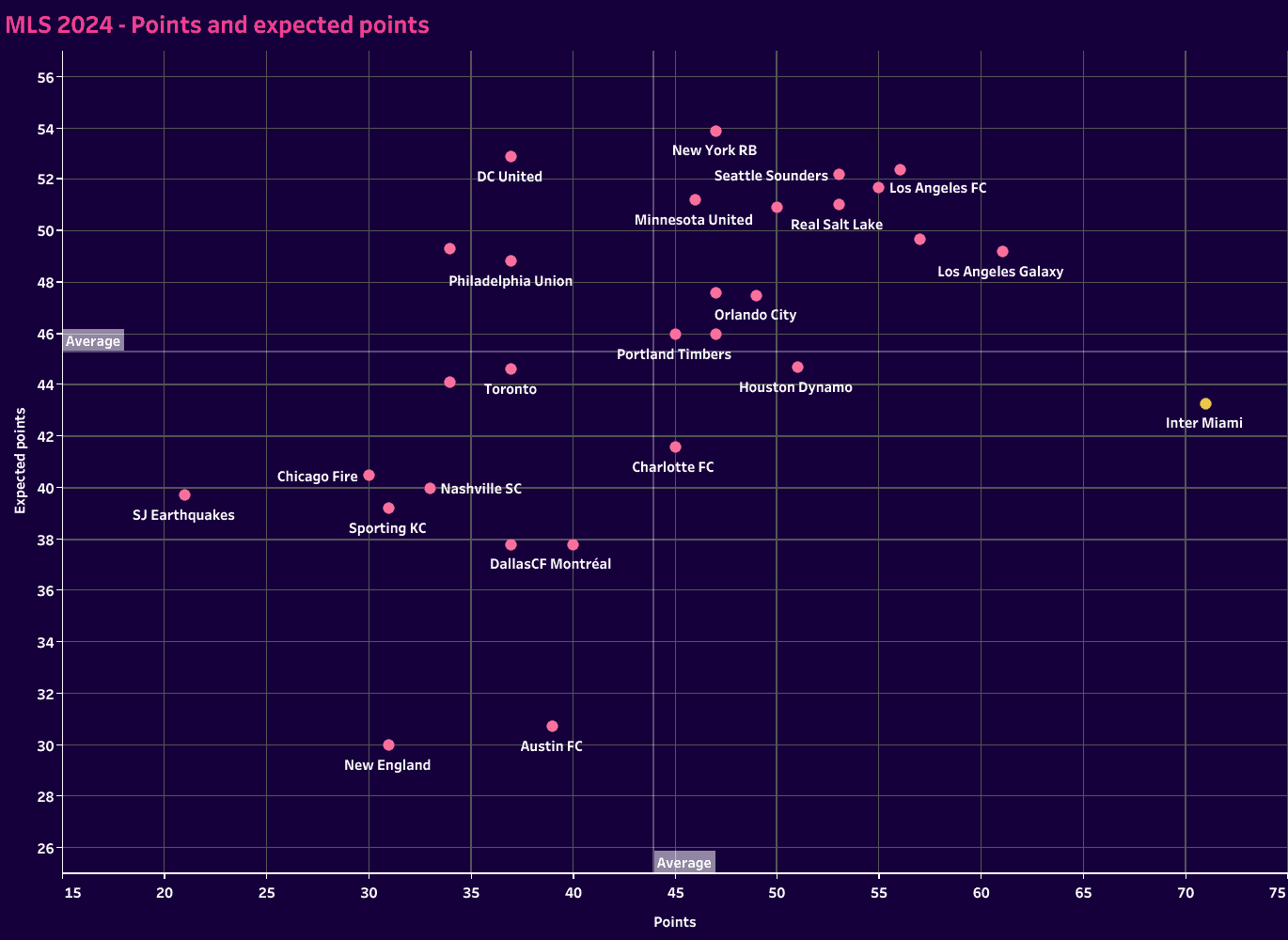
Expected points tell another story.
At 43.3 xPoints, they’re 10th from the bottom, which puts them slightly below the average MLS club in 2024.
MLS 2024 Goals Vs Expected Goals (xG)
Though Inter Miami lead the league in goals scored (73), we can also see that they have wildly outperformed their season xG.
They rate as slightly above average in xG (46.61) and xGA (51.24) for the campaign.
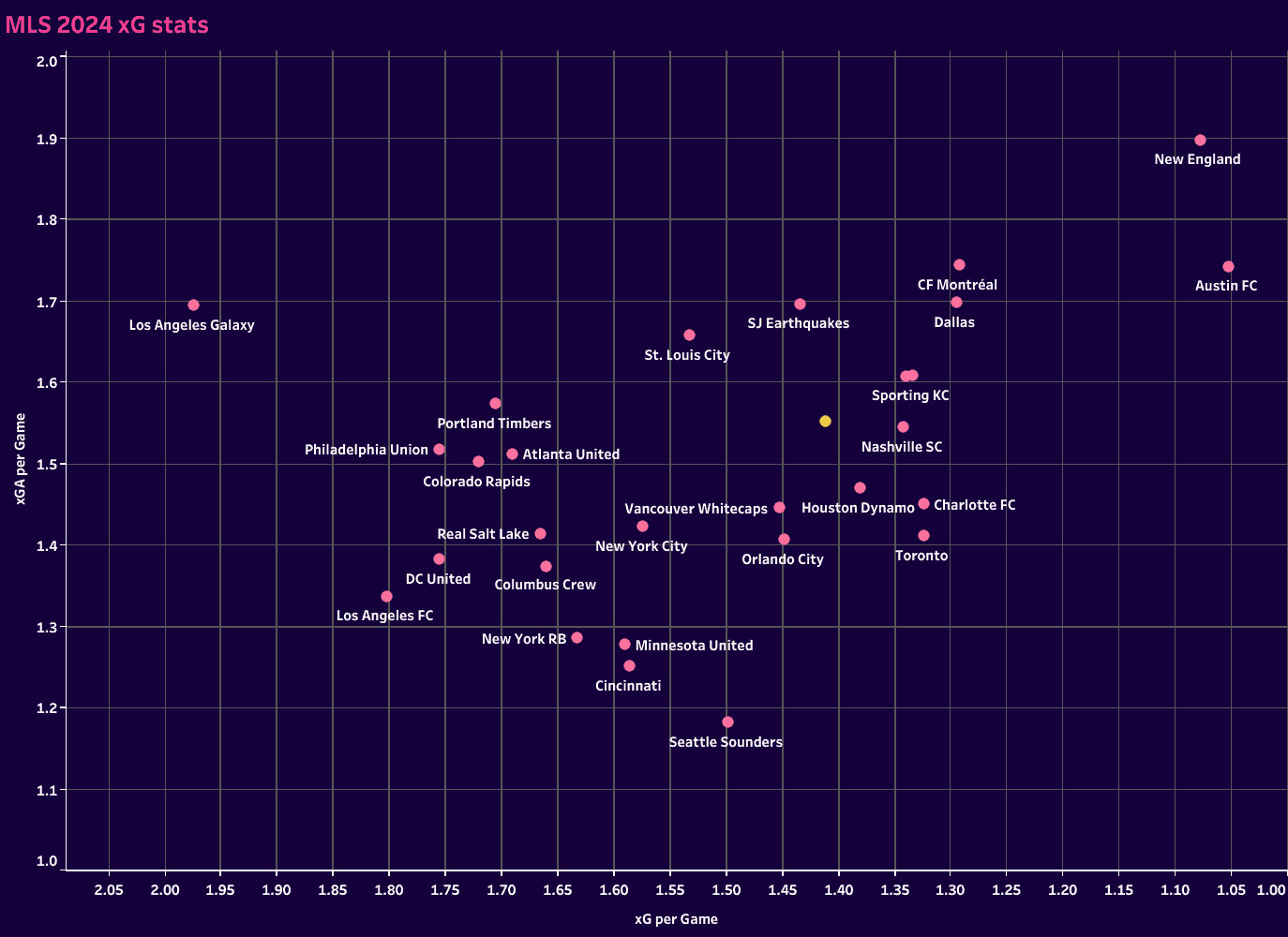
When you have a star-studded lineup like Manchester United and Real Madrid legend David Beckham has compiled, there’s perhaps no surprise to find a discrepancy in the actual and expected data.
The Barcelona expats at Inter Miami offer a certain quality that skews the scale relative to your average player.
For that reason alone, even though Inter Miami’s points and goal data are middling at best, they will surely not be bothered by such metrics.
There is a red flag for the casual observer, but the top seed in the MLS playoffs will feel confident that their talent can see them through.
To give a sense of their playing identity, don’t let the former Barcelona names on the lineup sheet fool you.
This is not a copy-and-paste job from Inter Miami manager Gerardo Tata Martino.
This is a team that has integrated the best qualities of the Barcelona stars with those of the supporting cast.
This is still a team that will rely more heavily on short and intermediate passes to advance the ball.
Looking at their progressive and long passes as a percentage of their total passes, we find that there is a greater tendency to play a more methodical style with quick ball circulation.
David Beckham
MLS 2024 Progressive Passes Vs Long Passes As Percentage Of Total Passes
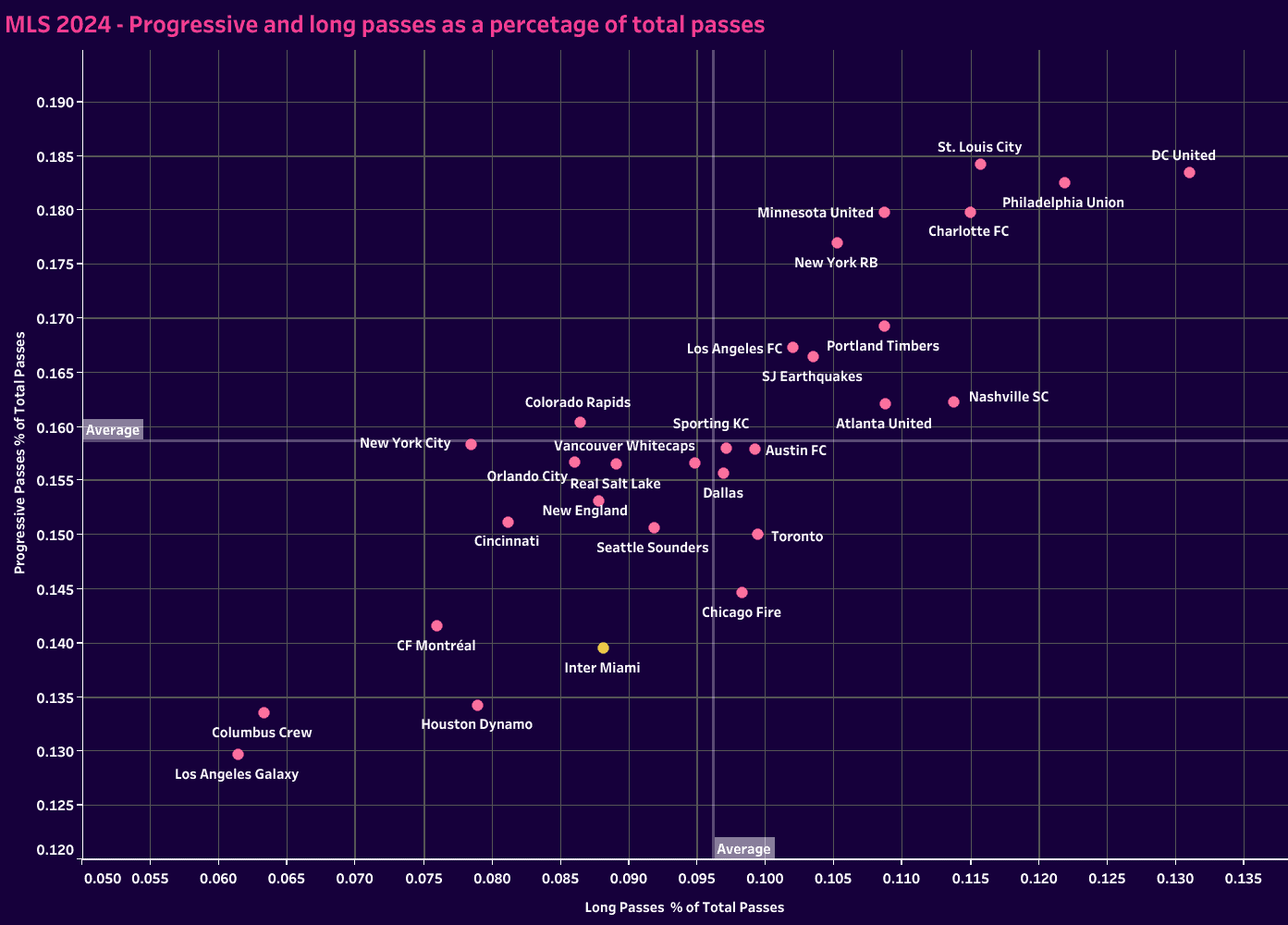
MLS 2024 Through Ball Data
If there is an area where Inter Miami are outliers, it’s with the number of through balls played per game.
While the percentage of passes P90 that qualify as through balls is tiny, the Herons chose the most significant differentiation in pass types here.
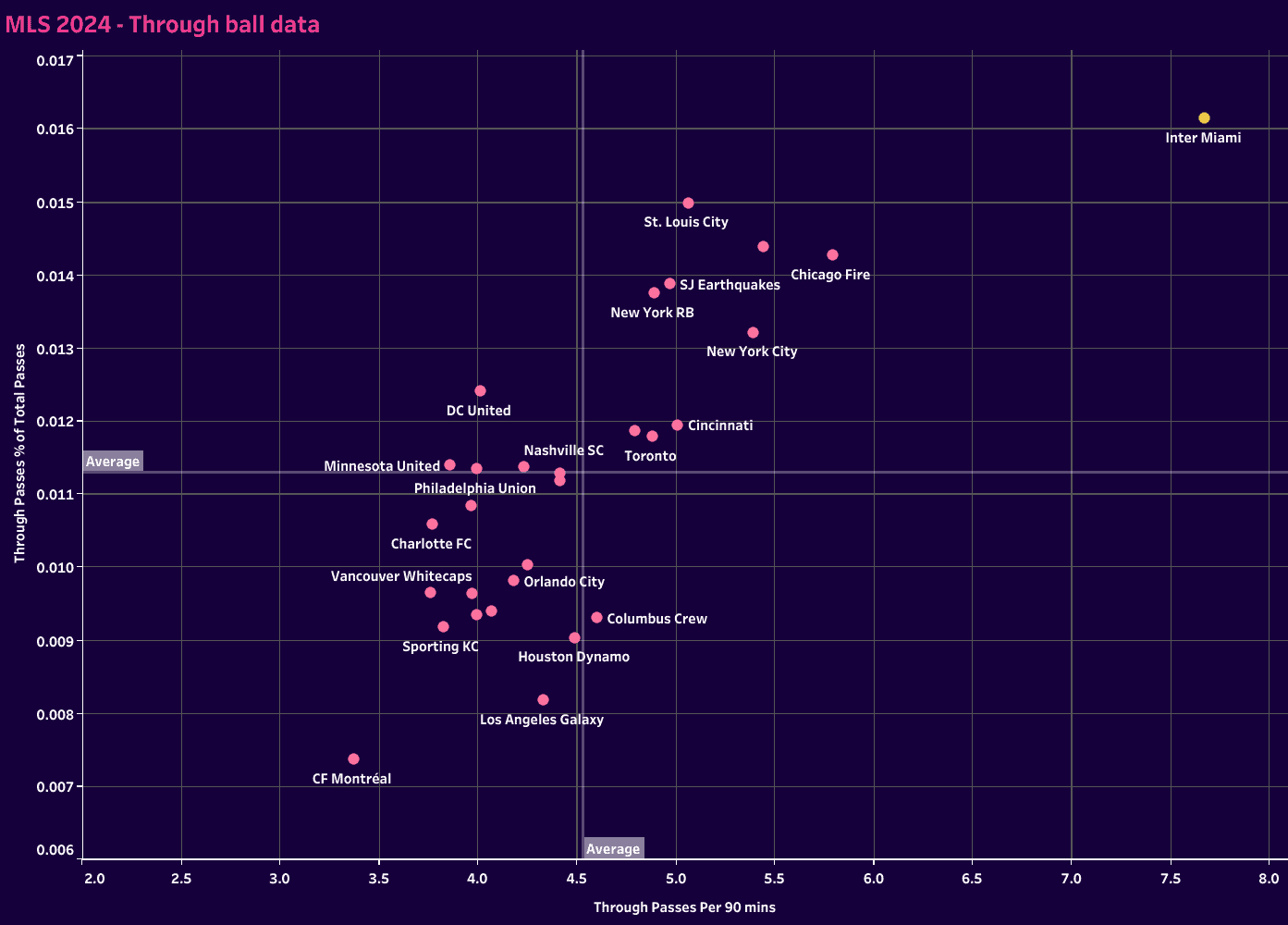
Once players can receive between the lines and face forward or Messi is on the ball, it’s common to see a run behind the line offered.
With Miami turning their 3-4-3 into a 3-2-5 in possession, they always have players in the highest lines to offer a run.
This is especially dangerous when Messi is on the ball.
Despite some of the data, this team will contend for the MLS Cup.
Having a home-field advantage throughout the playoffs will certainly bolster their cause.
That said, this team is not invincible.
There are vulnerabilities in this squad, and they’re worth looking at.
Inter Miami Defensive Issues Take The Spotlight
One exciting feature of this team is that Sergio Busquets, the long-time metronome of Barcelona’s possession-dominant positional play, has moved from the pivot to centre-back.
In a league that is more open than their top counterparts in Europe, mobility in midfield is incredibly important.
Shifting Busquets to the backline makes sense from that perspective.
Plus, with Inter Miami using a back three, he can approach the position in a similar way to a pivot who drops in to split the centre-backs.
There’s a naturalness to that positional transition.
The issue that arises surrounds their defensive tactics.
Positionally, the centre-back has fewer affordances to take risks than a defensive midfielder.
This is where Busquets’ tendency to vacate the centre of the pitch and follow players into midfield becomes a liability.
Coverage doesn’t consistently arrive quickly enough to cover the gap he leaves behind, and opponents are starting to see it.
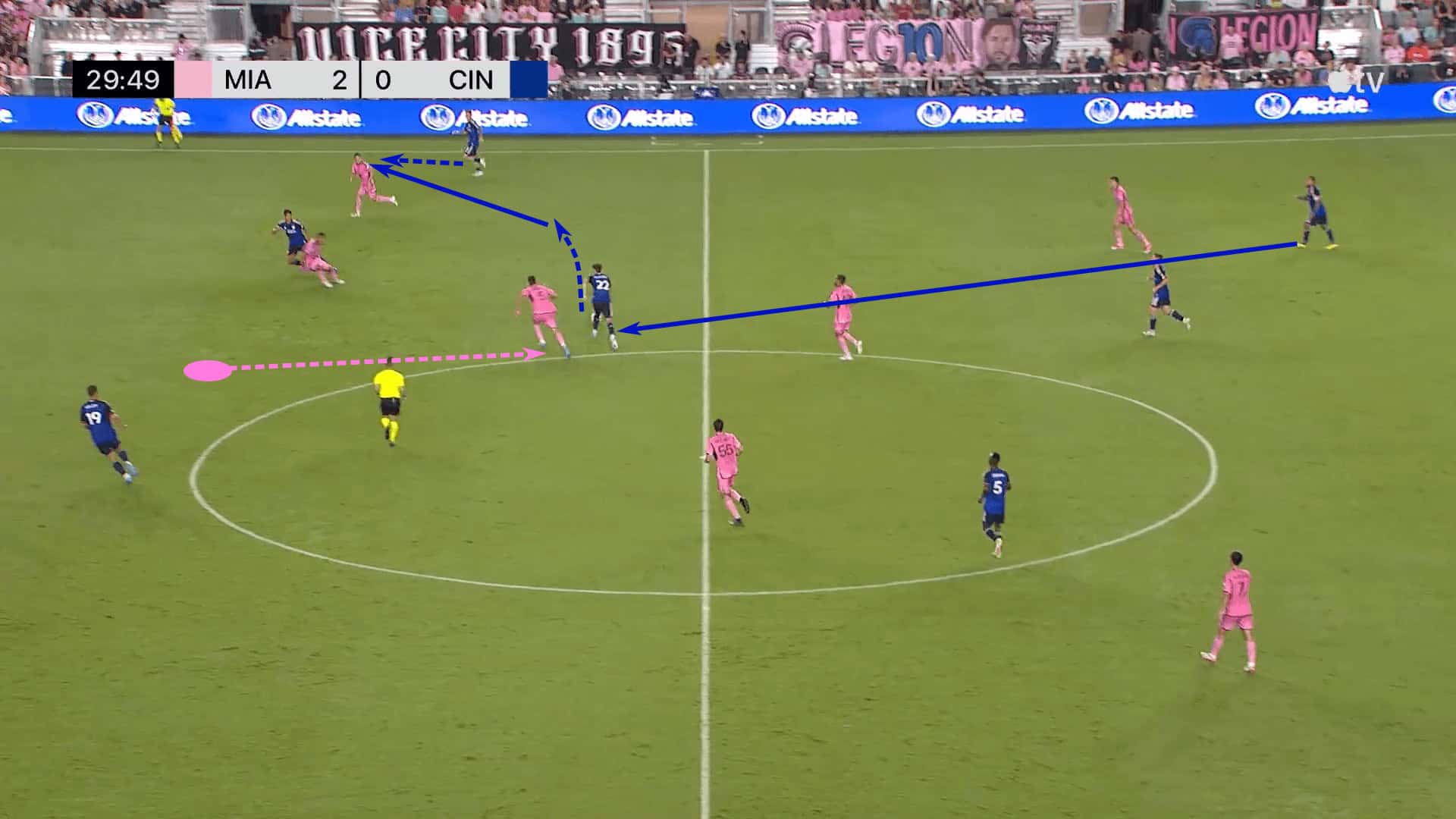
Miami does give cover this time, but they’re unprepared for the service into the box.
While Busquets tries to apply pressure on the ball, his backline has one player who is caught between his mark and the ball and is oblivious to the run behind him.
Another allowed his mark to beat him to the inside.
It was an excellent service that Cincinnati needed to finish.
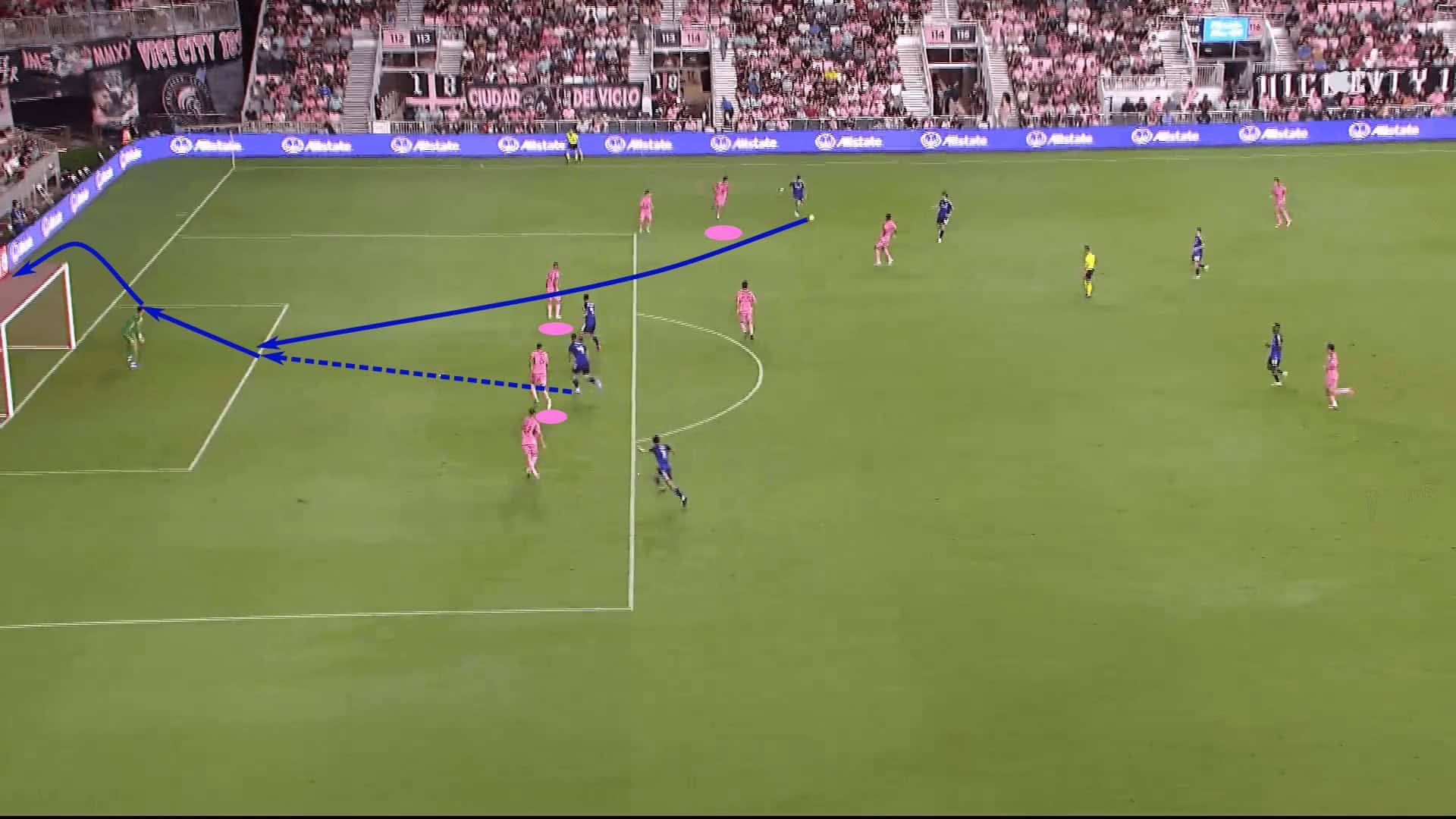
There are some defensive vulnerabilities in this squad.
Playing Busquets as a centre-back has its benefits in possession, but out of possession, there are moments in each game when the team has to improvise some critical adjustments.
Much like some of the issues surrounding PSG’s defensive tactics with Messi, Neymar and Kylian Mbappé, Miami must contend with the fact that Messi and Suárez will add little to nothing to the press.
That does put a strain on the players behind them.
While the 3-4-3 will keep five players behind the ball for the majority of the match, the wing-backs must work hard to track back from their high positions.
As we see below in the example against Cincinnati, late recoveries can leave Miami exposed.
While they will typically have enough players behind the ball to contain the opposition and delay their attack until help arrives, Miami’s rest attack does give some concern.
On the one hand, once they recover the ball, they’ll always have outlets that they can play into.
On the other hand, they may not have the help needed at the back to keep the ball out of the back of the net as gaps emerge within an unorganised press.
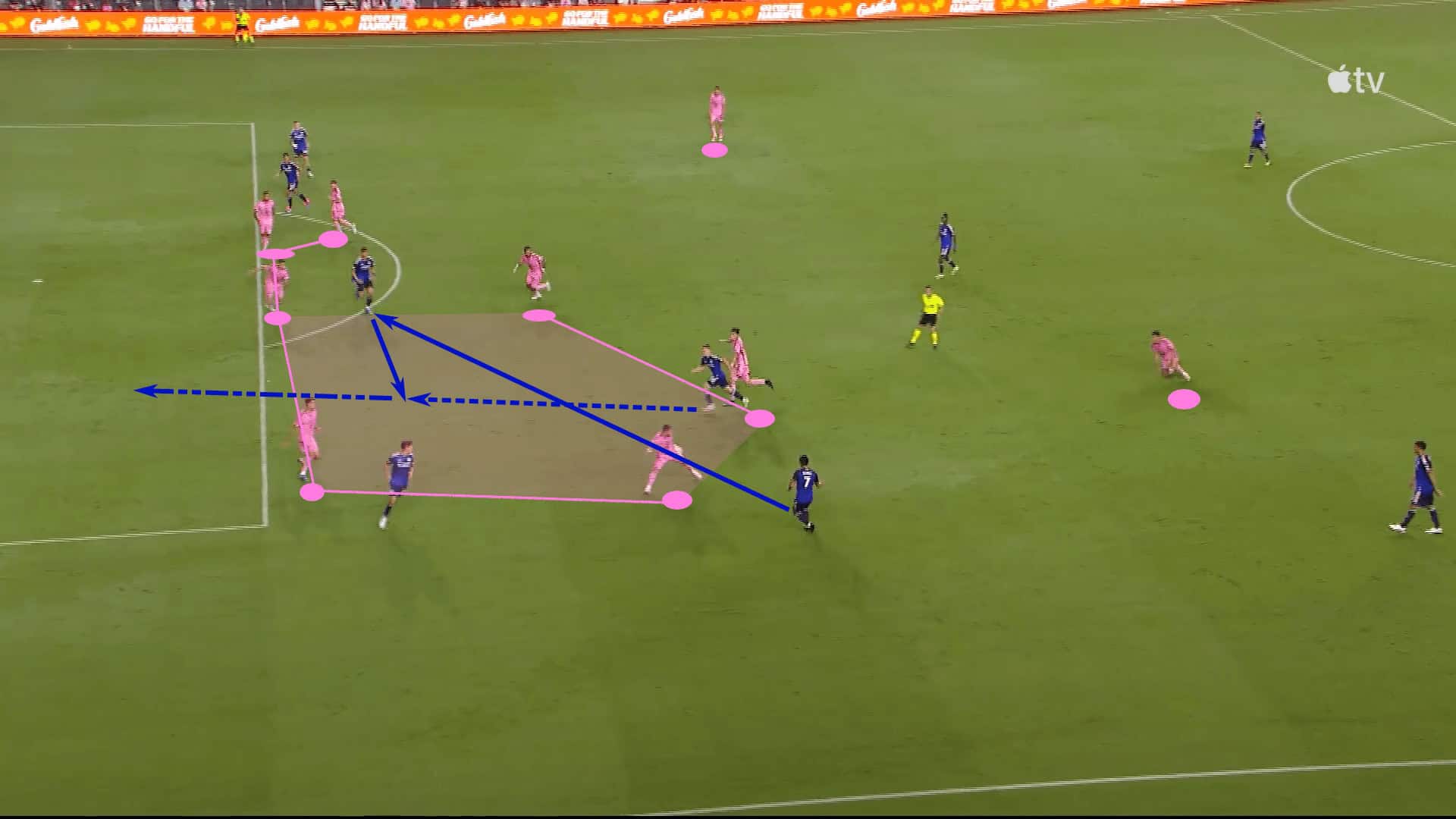
As Miami became exposed at the back against Cincinnati, the Ohio side could stretch the back line and use late runs from midfield to break through the press.
In this instance, Cincinnati was in a position to shoot or square the ball across to the far post runner.
Fortunately for Miami, they emerged from the scenario unscathed.
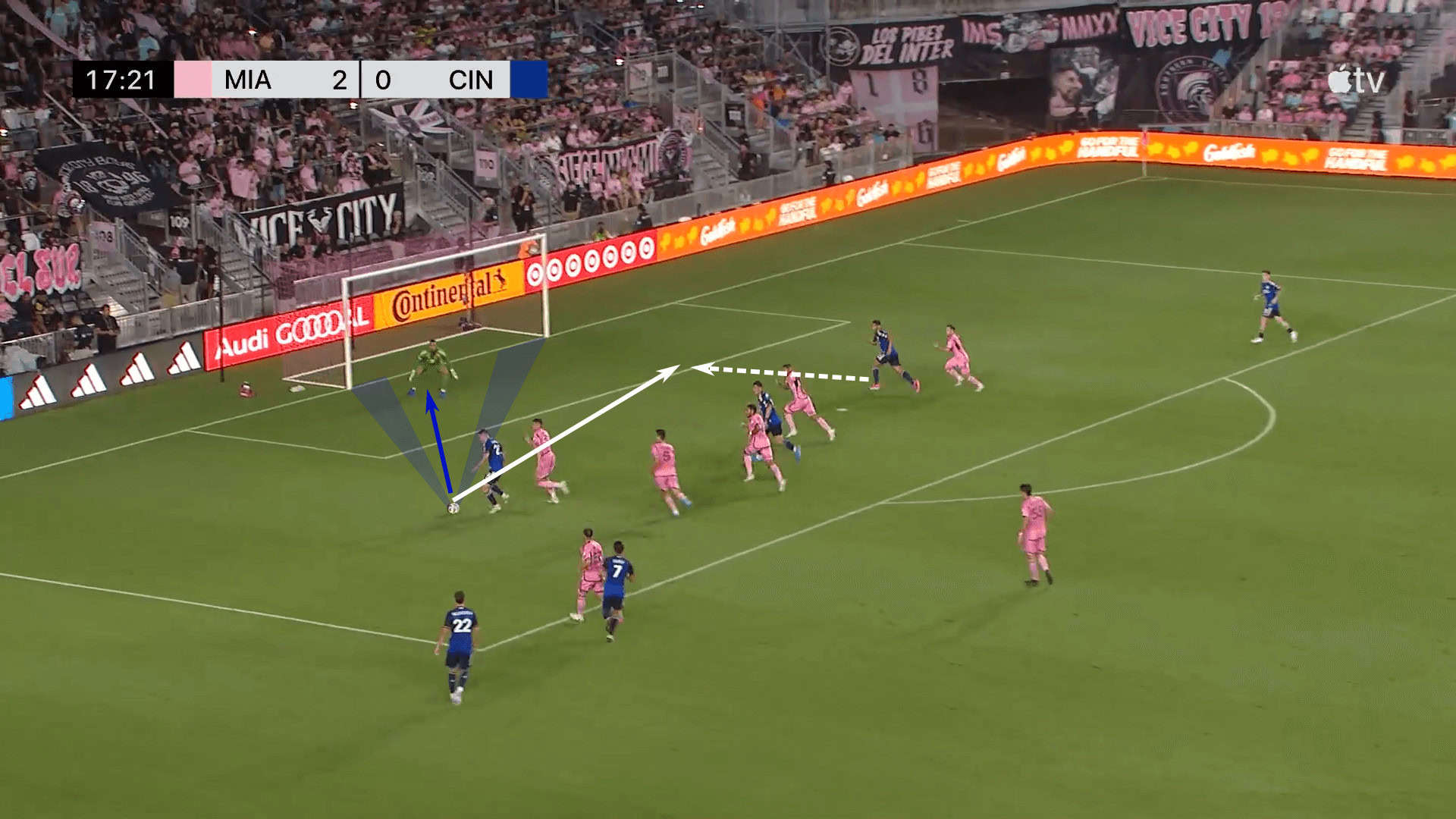
We also see that the side can struggle to generate pressure within the press to seal opponents into pressing areas.
Below against Columbus, Miami aggressively pushed numbers near the ball, but we see a twofold issue.
First, the press doesn’t generate enough pressure on the ball to recover it.

Second, just beyond that 4v4 area, there is a lack of cover.
That poor support gives Columbus a way out of the press.
The consequence is to switch play to the wingback, Max Arfsten, through #17, Christian Ramirez.
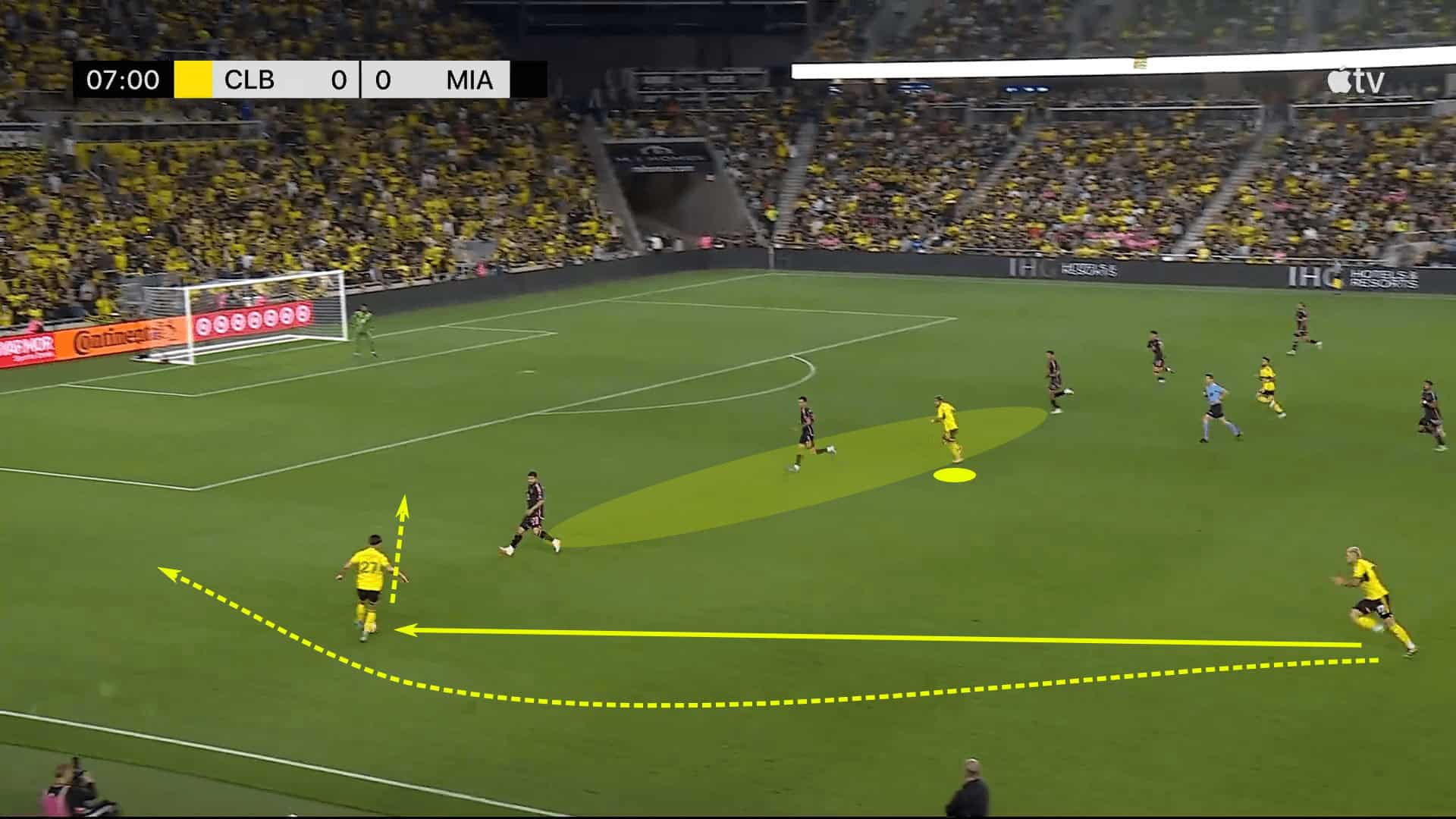
That forces some recovery defending from Miami.
Play is ultimately whistled for offsides, but even here, we can see Busquets sliding too aggressively in cover and allowing his mark to run behind him into the box.
Columbus managed to put the ball on the back of the net before the goal was called back.
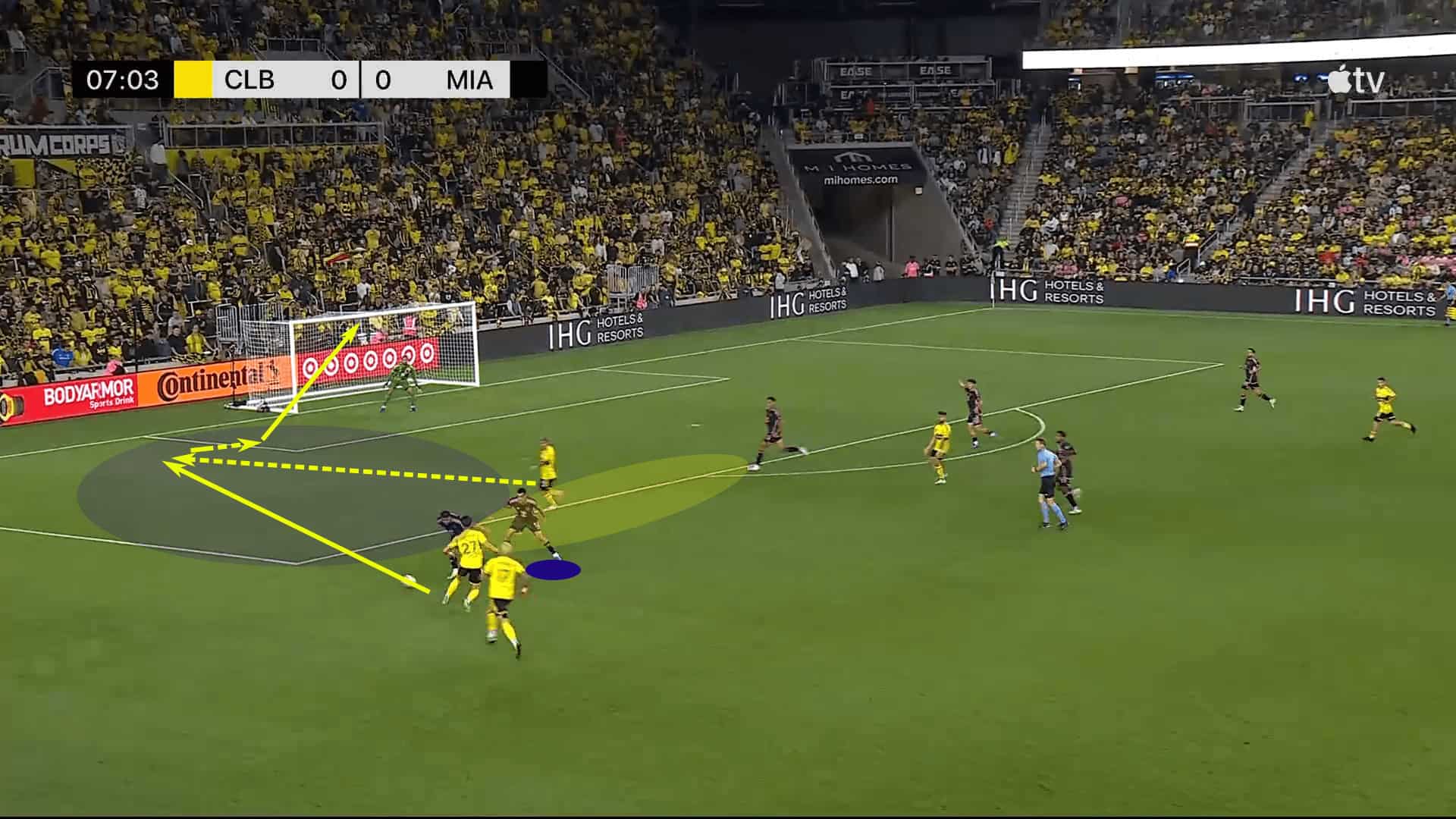
It was a warning shot early in this game and a sign that issues with the press could derail Vice City’s postseason ambitions.
Inter Miami Defensive Transitions Are A Problem
Let’s stick with Miami’s defensive tactics.
We’ll push this tactical analysis in the direction of their defensive transitions.
Despite some of the elder statesmen in the squad and the absence of defensive contributions from the first line of the press, this Miami side does have talented, young ball winners in midfield.
That said, if the Miami lines get stretched, the pivots will have a massive task in front of them.
For Miami to have success in the playoffs, they’ll have to protect the backline and ensure opponents can’t isolate themselves against the three centrebacks.
This includes offering help as the opposition’s forwards receive the ball back to goal.
Below, we have an example of Busquets applying aggressive pressure on his direct opponent and getting spun.
Notice the pivots aren’t close enough to provide back pressure, and the nearest centreback is too distant to offer cover, especially with the attacker turning to the outside.
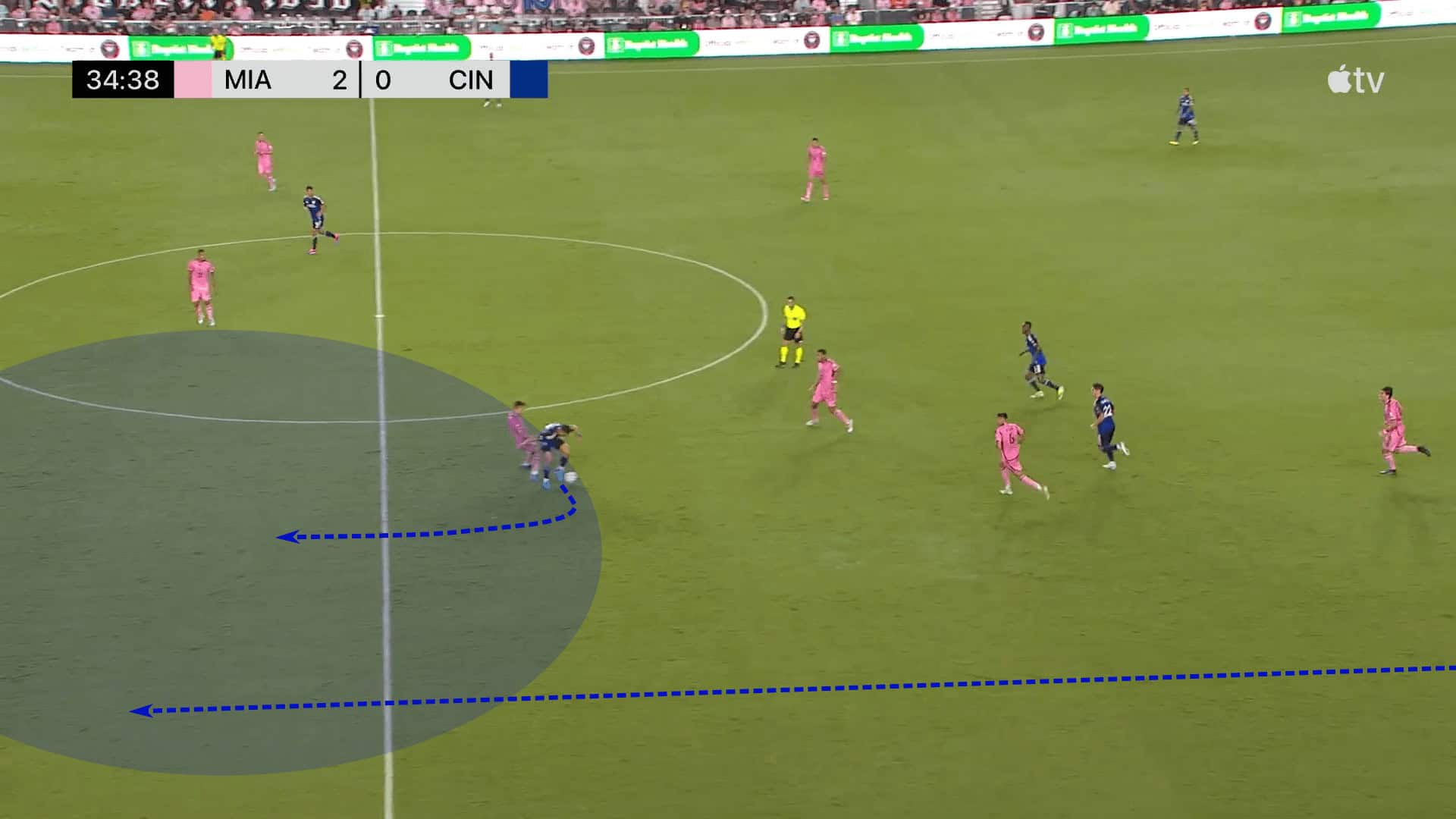
As Cincinnati streaks towards the goal, Busquets initially loses ground before halting the attack with a lunging tackle in the box.
With Cincinnati moving up the pitch, look at the opportunity for an early ball to the far post.
The central defender is caught in no man’s land; he is not close enough to move into a first-defender role and is also unable to account for the runner behind him.
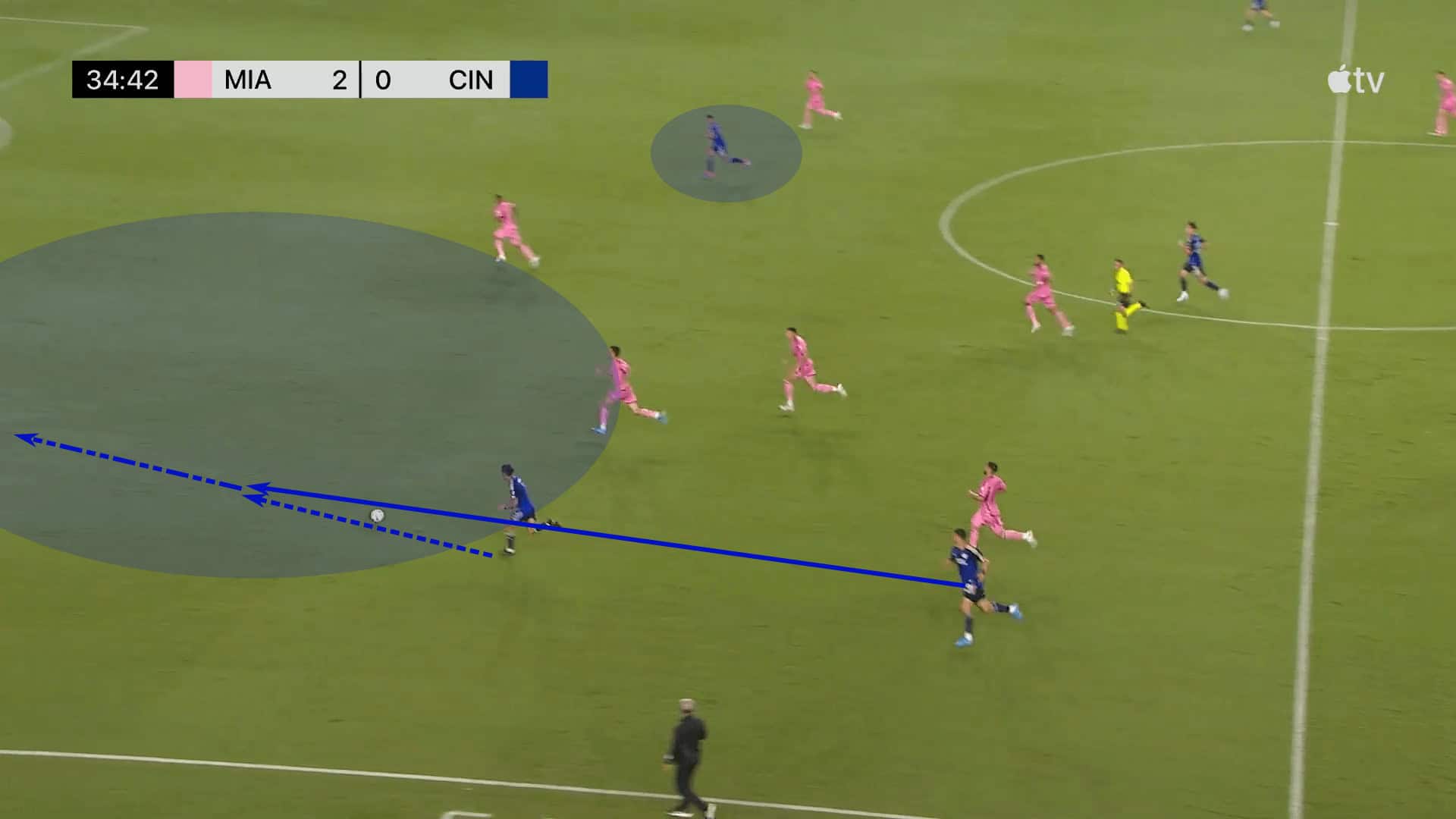
These are the types of situations opponents have to look for.
As Miami aggressively steps forward in transition and tries to recover the ball, there’s an opportunity to use their aggression against them.
Though Cincinnati couldn’t punish them in this specific sequence, there is a vulnerability in Miami’s recovery defending.
Another obstacle for Miami is that, besides Busquets, there are good, but not great, ball progressors along the backline and midfield. While they will generally do the job and retain possession, they’re prone to unforced errors and bad giveaways in their half.
This pass was pressured against Charlotte FC below, but you can see the circumstance it creates for the North Carolina club.
Jordi Alba is pushing higher in the left wing, anticipating an opportunity for a third-man run, but the ball is turned over.
As the Crown counter, Miami has limited numbers deep enough to defend.
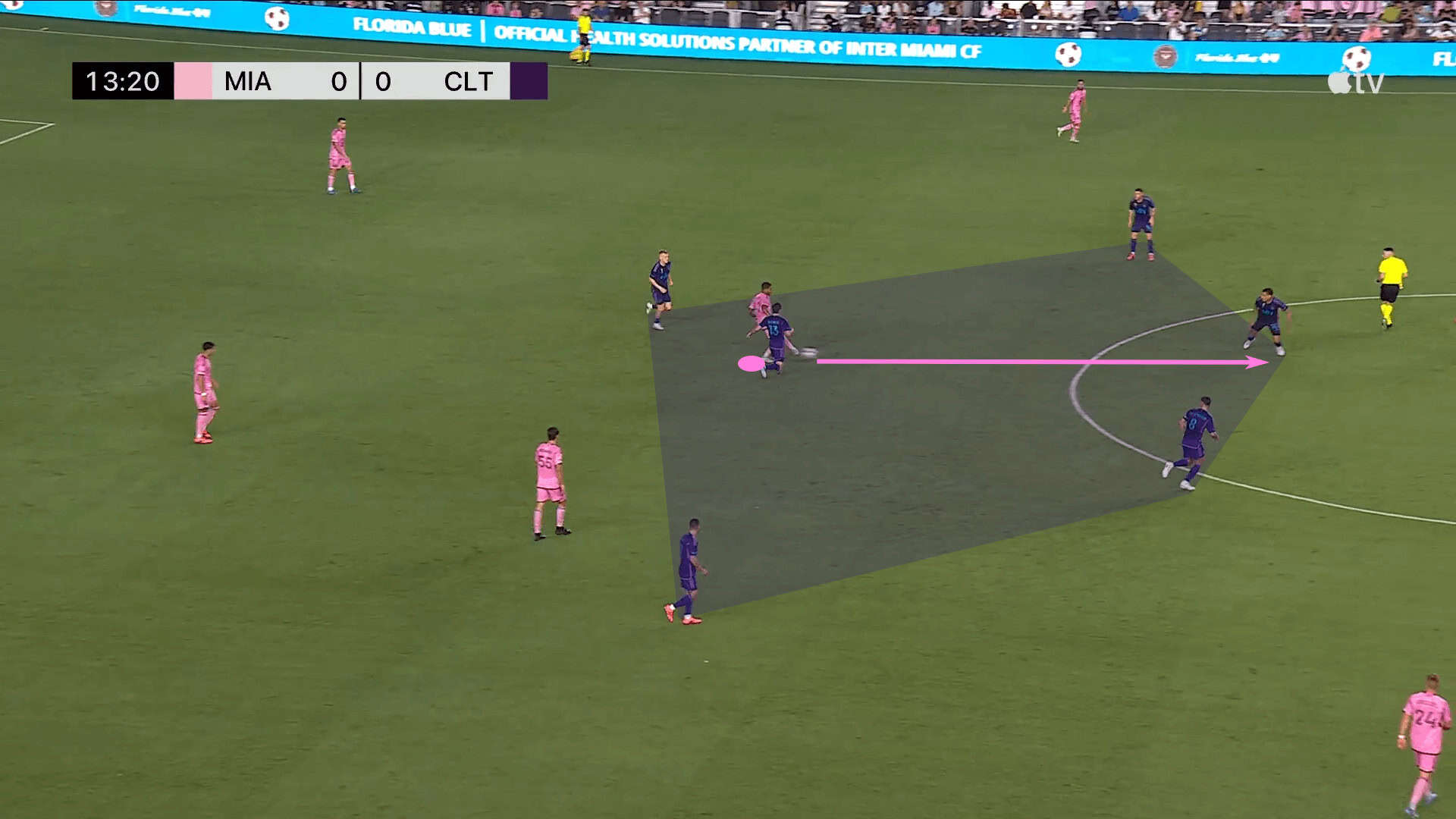
As the ball is played forward, Charlotte has opportunities for 2v1 and 3v2 situations in their immediate vicinity.
To make matters worse, Tomas Aviles steps forward to intercept the pass and gets beat.
A give-and-go has Charlotte running toward the box with limited numbers.
Plus, centrally, with Busquets tracking the run of Karol Świderski, there’s a runner alone in the central channel.
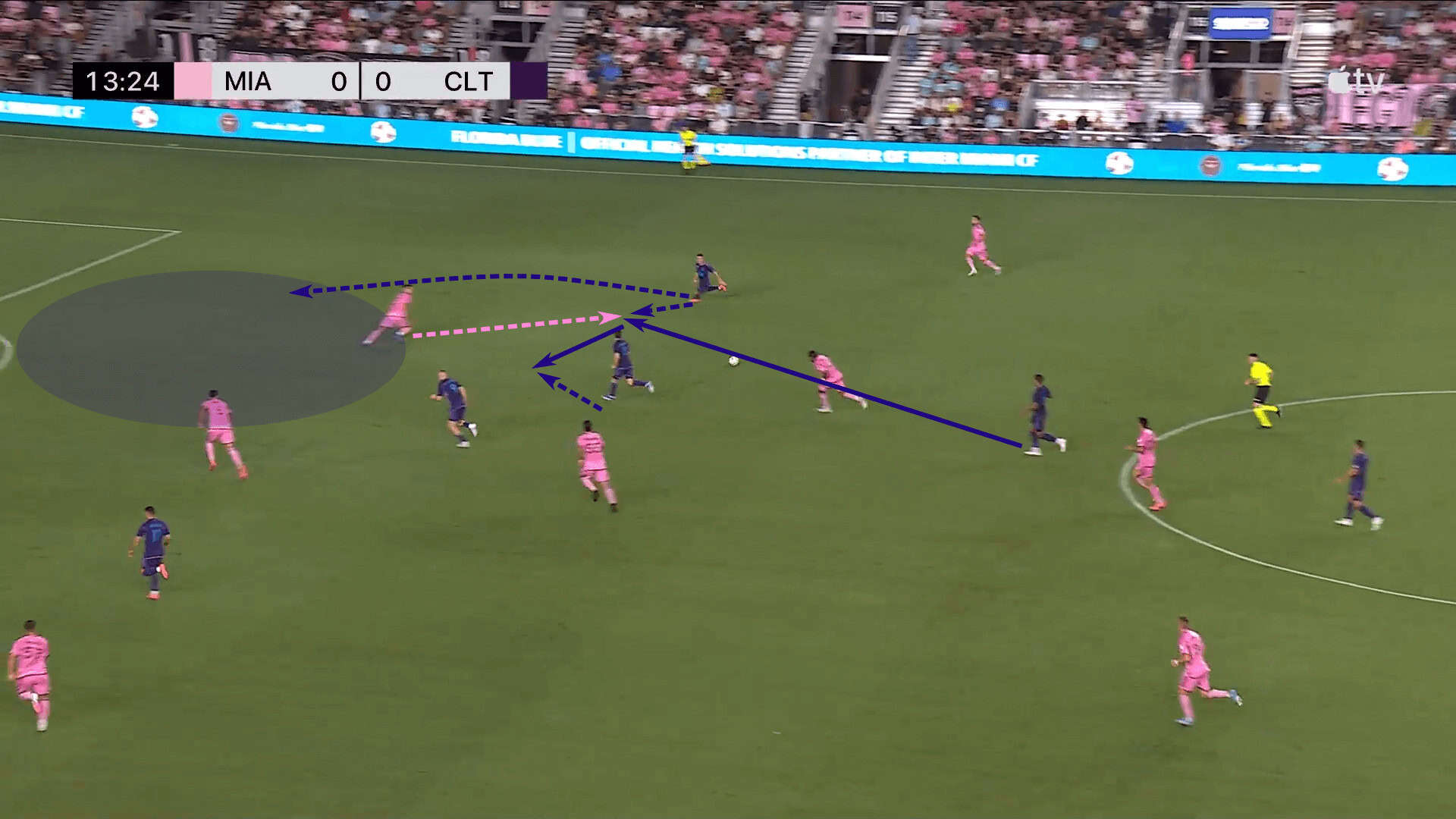
Yannick Bright hustles back and manages to end a sloppy counterattack, but with numbers unprepared to recover behind the ball, this is the type of errors coming out of the back that can prove decisive in the playoffs.
Conclusion
After wrapping up the season against New England on October 19th, Inter Miami will face the winner of the Eastern Conference wild card match.
The first round is a best-of-three series, leading to conference semi-finals.
The talent is there for Miami.
Beckham has built a behemoth.
Martino will know that his side can score goals, but with the 20th-ranked xGA in MLS in 2024, can they prevent opponents from scoring?
These gritty playoff matches often have the tactical pragmatism that we see in international tournament knockout rounds.
If defence wins championships, Inter Miami have their work cut out for them.

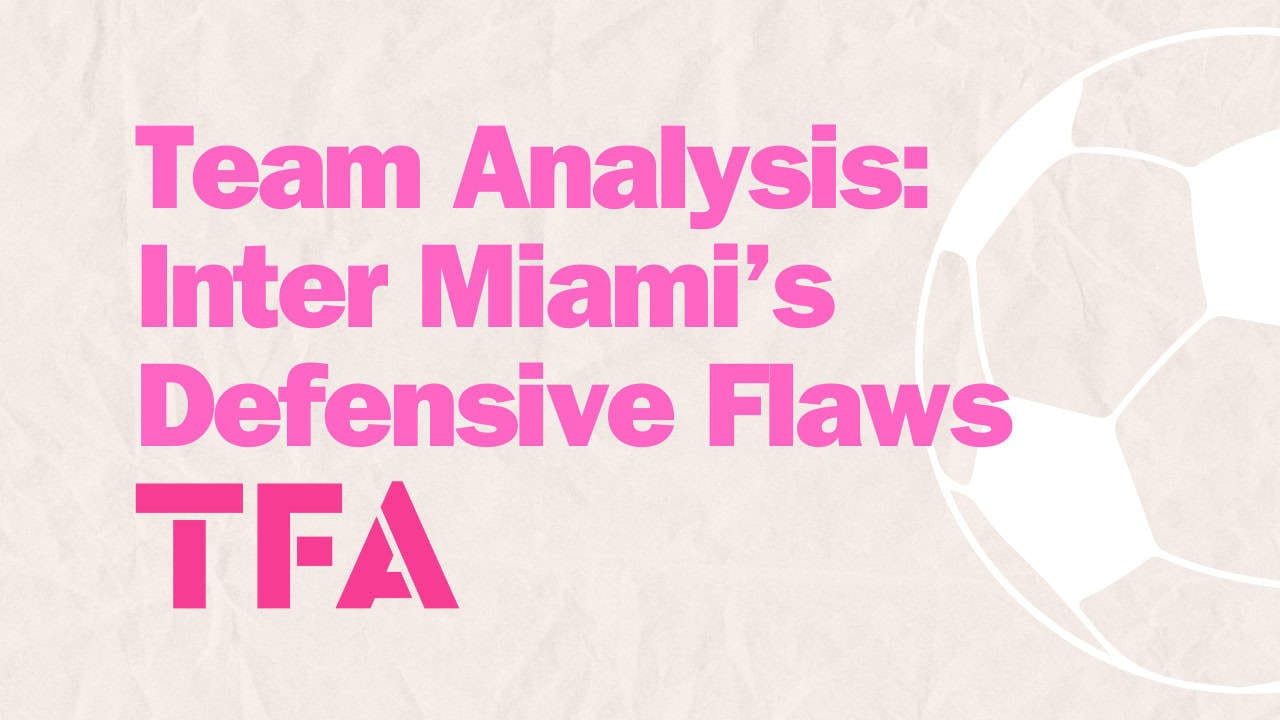



Comments